#multi vendor ecommerce
Text
From Electronics and Clothing to Food and Pharmaceuticals, Ecommerce is Omnipresent.

In today’s world, it is nearly impossible to think about shopping without ecommerce. It has completely engulfed the entire retail industry.
A futuristic retail business cannot afford to remain offline, especially after the pandemic when offline businesses were either forced to exit or face loss. Retail businesses turned to modern advanced technology and went online which not only kept them afloat but also brought sales and profit.
One can find almost all the desired products online on his ecommerce marketplace app. With just a few clicks or touches, a customer can enter into the world of online shopping where multiple vendors display their digital catalogue and place orders smoothly.
All this has been made possible due to the power of multi vendor marketplace software that is delivering multiple benefits to the stakeholders involved in online shopping.
Multiple vendors on the same platform: Instead of having dedicated ecommerce software for each vendor to display their products, online marketplace software allows them to use one single platform to sell their items. Amazon and Flipkart are the best examples. A new vendor on the platform doesn’t have to invest heavily in marketing as he gets an already built customer base in the marketplace.
A variety of products: Due to the availability of multiple vendors on a single platform, the customers don’t have to jump from one platform to another in order to find the best products at the best price. They can find everything on the same platform thereby, reducing their efforts and saving their precious time.
Super fast delivery: Timely delivery has become a major factor in determining the success of any online business. Failing to deliver the product in the stipulated time, spoils the shopping experience of the customer. Keeping note of this, the multi vendor marketplace software has brought end-to-end automation in the entire ordering and delivery process. For instance, the delivery agent can find the optimized delivery route on their driver app in order to contribute to achieving quick commerce.
The ease of uploading items: With the help of the vendor’s dedicated merchant app, the sellers can upload items in bulk ranging from electronics and clothes to food and pharmaceuticals in just a click or touch. This makes the work of sellers easy. Also, the ease of product upload helps the customers in finding a variety of items on a marketplace.
In the eCommerce Market, the number of users is expected to amount to 2.5bn users by 2028. User penetration will be 29.7% in 2023 and is expected to hit 34.1% by 2028. Going through the data above, it is evident that ecommerce is omnipresent and is going to exist for a long time. Thus, prudent businesses will be ones that will walk along with the advancing technology.
#quick commerce#q commerce#ecommerce marketplace#multi vendor ecommerce#multi vendor marketplace software#multi vendor marketplace#multi vendor ecommerce software
0 notes
Text
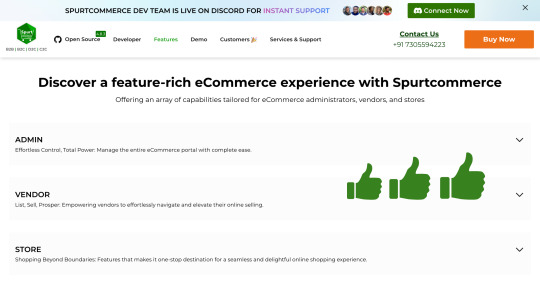
Elevate your eCommerce game with Spurtcommerce Marketplace Solution!
✅ Admin Excellence: Take full control.
✅ Vendor Empowerment: Seamless selling.
✅ Customer-Centric Storefront: Enjoy a superior shopping experience.
Explore Spurtcommerce features now! https://www.spurtcommerce.com/features
#Spurtcommerce #ecommerce #onlineshopping #ecommercefeature #EcommerceAdmin #storefronts #vendors
0 notes
Text
#shopify multivendor#shopify experts#hire shopify experts#shopify development company#ecommerce development company#shopify marketplace app#shopify multi vendor marketplace#shopify experts marketplace#shopify expert marketplace#multi vendor marketplace shopify#multi vendor marketplace app
2 notes
·
View notes
Text
AWD
Starting in the year 2021, with an idea in mind, fire in the heart, and creativity in my head, Ahmedabad Website Designing embarked on the journey with thoughts evolving and it is strongly increasing day by day. We are an India-based company dealing with Website Designing, Website Development, E-Commerce Development, Domain Registration and Hosting, Search Engine Optimization, Digital Marketing, Internet Reputation Management, and Software & Mobile Application Development. Ahmedabad Website Designing is characterized by unparalleled experience
, comprehensive capabilities, and extensive research fulfilling the requirements of various industries and their business segments. This enables us to collaborate with its clients, and help them become the leaders in their respective businesses. We help our clients perform at the highest levels so they can create sustainable value for their customers.
#Web Designing#Website Development#WordPress Website Development#Ecommerce Website Development Services#Multi Vendor Ecommerce Website Development#Search Engine Optimization#Local SEO#Digital Marketing#Social Media Marketing#Graphic Designing#Email Marketing#Pay Per Click PPC Management#Mobile Application Development#developers & startups#art#business
4 notes
·
View notes
Text
You’re Premier Multi-Vendor Ecommerce Platform Accra
Discover a bustling hub of commerce in Accra with our Multi-Vendor Ecommerce Platform Accra. Connecting buyers and sellers seamlessly, it's the heartbeat of online shopping in Ghana's vibrant capital.
0 notes
Text
Introducing the world’s first completely free e-commerce platform for women. Sell and earn in just 3 easy steps by setting up your shop. Hurry up !! And
Register now @ www.sheconomy.in !
#SHEconomy#women entrepreneurs#ecommerce#ecommerce platform for women#ecommerce platform#multi vendor marketplace#online ecommerce platforms#best ecommerce platform in india#businessgrowth#free platform#0% commission
0 notes
Text
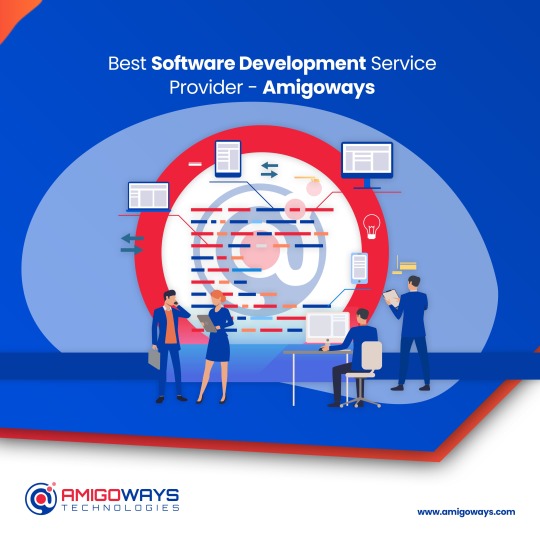

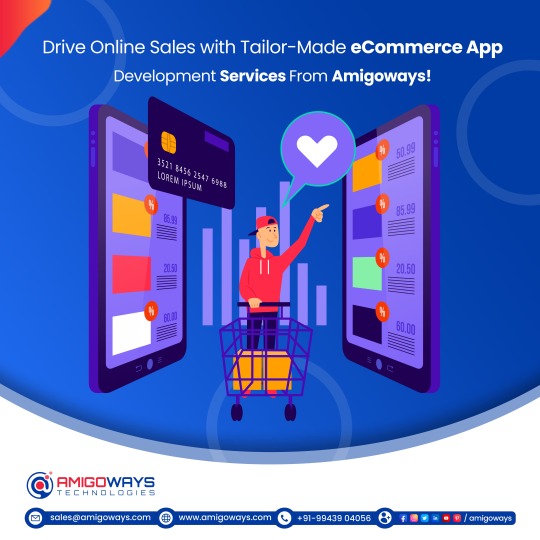
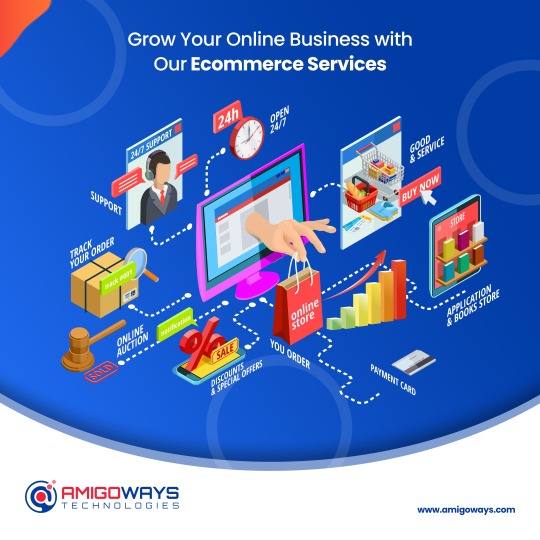
Top eCommerce Development In Tamil Nadu
Amigoways is one of the most trusted eCommerce development company in Madurai, We offer effective and successful eCommerce website & extension development for all types of B2B & B2C organizations. Amigoways is a team of well-trained, certified tech professionals who structure your venture with a business suite. Our multitude of services for your business upliftment on the business market.
Our eCommerce Development Services
Custom ECommerce Development
API Integration & Customization
Data Maintenance & Migration
ECommerce Audit & Optimisation
ECommerce Data Analytics
ECommerce Consulting
Business Intelligence
To know more about eCommerce development services Tap on - https://www.amigoways.com/ecommerce-development/
#ecommerce website development in madurai#Multi Vendor eCommerce Services in Tamil Nadu#top Multi Vendor eCommerce Services in Tamil Nadu#b2b ecommerce software solutions in madurai#multi vendor clone script madurai
0 notes
Video
youtube
How To Install Farmart Single or Multivendor Laravel eCommerce System
🔗 Script Download Link: https://webthemeapp.com/?p=6306
#agency#botble#cart#clothing#ecommerce#electronic#laravel#marketplace#martfury#multi-language#multilingual#multivendor#shop#shopping cart#single vendor
0 notes
Text
Rise and Impact of Multi-Vendor Marketplace Script in eCommerce Business

The development of multi-vendor marketplace script has transformed the eCommerce industry, allowing businesses to build online marketplaces similar to Amazon and eBay. These scripts give a ready-to-use solution for creating a platform where multiple vendors can sell their products, increasing customer options and delivering a greater selection.
Key Factors Driving the Usage of Multi-Vendor Marketplace Script:
Reduced Development Costs: Custom development is not necessary with multi-vendor marketplace scripts, which saves both time and money.
Quick Setup and Launch: These scripts provide a ready-to-use solution, allowing for the quick deployment of a working marketplace.
Scalability and Flexibility: Multi-vendor marketplace scripts are built to scale and can be tailored to meet specific business requirements.
Feature-Rich Functionality: They include essential features for managing vendors, products, orders, payments, and promotion.
Impact of Multi-Vendor Marketplace Script on eCommerce Businesses:
Increased Product Variety: By bringing together multiple sellers, multi-vendor marketplaces provide a varied choice of items to a larger client base.
Increased Visibility and Reach: Vendors receive exposure to a larger audience, boosting their chances of connecting with potential buyers.
Simplified Marketplace management: The eCommerce Scripts reduce operational complexity by simplifying the handling of vendors, items, orders, and payments.
Expanded income Opportunities: Marketplace owners can earn money through a variety of models, including commission fees, subscription fees, and advertising revenue.
Less Competition: Multi-vendor marketplaces can level the playing field for small sellers, allowing them to compete with bigger shops.
Improved Customer Experience: Customers can choose from a larger variety, compare prices, and have a more convenient buying experience.
Benefits for eCommerce Entrepreneurs
Better Scalability
Scalability is an unresolved problem for eCommerce companies. Multi-Vendor Marketplace Script provides a scalable platform, allowing entrepreneurs to grow their businesses without having to completely revamp their infrastructure. This adaptability is essential in meeting market demands and accommodating corporate expansion.
Efficient resource Utilization
Resource optimization plays an essential role in long-term business strategies. Multi-Vendor Marketplace Scripts help businesses run more efficiently by centralizing essential processes, minimizing redundancies, and assuring effective resource allocation. This results in cost savings and a more flexible business approach.
Competitive Advantage in a Variety of Markets
In an era where businesses are no longer restricted by geographical boundaries, having an online presence is necessary. Multi-Vendor Marketplace Scripts enable businesses to enter new markets, giving them a competitive advantage by accessing a larger audience and diversifying income sources.
Both individuals and businesses can build their online eCommerce store with the Multi vendor eCommerce Script. As the business expands, these scripts will play an increasingly larger role in moulding the future of online buying.
Are you ready to take your eCommerce business to the new heights? Explore the possibilities provided by Multi-Vendor Marketplace Scripts. Accept the future of online shopping and set up your business for long-term success.
Reach out to us for professional guidance and implementation.
Contact our team for knowledgeable assistance and smooth Multi-Vendor Marketplace Scripts setting up. Our team of experts are standing by to help you maximize the potential of your eCommerce business. With Sangvish unique solutions, you can stay ahead of the curve and lead in the digital economy.
0 notes
Text
Advantages of a Multi-Vendor Marketplace | Laravel E-commerce
In the realm of eCommerce, the concept of a multi-vendor marketplace stands as a beacon of opportunity, offering an all-in-one shopping experience where a diverse array of products and services converge under a single digital roof. These marketplaces, exemplified by industry giants like Amazon and Flipkart, open wide avenues for various sellers to showcase their offerings, effectively expanding their reach and boosting their revenue streams.

Understanding the Multi-Vendor Marketplace Business Model
At first glance, the concept of establishing a multi-vendor marketplace might appear complex. However, it’s far more manageable than it seems. The fundamental goal of vendors and merchants within such a platform is simple: to drive sales. Each participant plays a unique role in achieving this goal.
Vendors take charge of vital aspects such as sales management, order processing, product listings, inventory management, and shipping logistics. Meanwhile, service providers focus on devising innovative strategies to bolster brand recognition and drive revenue growth.
The operation of a multi-vendor marketplace involves several critical steps, whether you intend to launch a specialized fashion boutique, a designer jewelry hub, or an all-encompassing marketplace akin to Flipkart or Snapdeal. Vendors can easily register on the platform, manage their product catalogs, oversee purchases, and maintain control over their operations through a unified dashboard.
When customers place orders, transactions are seamlessly facilitated through the platform, with merchants collecting a nominal commission fee for each successful sale. Vendors also shoulder the responsibility of addressing customer inquiries and resolving any complaints, as well as handling packaging and shipping processes.
The Rising Demand for Multi-Vendor Marketplaces
In contrast to single-vendor stores that exclusively offer their own products, multi-vendor marketplaces present a treasure trove of choices from various brands and product categories, meeting the diverse needs of customers all in one place. This inherent versatility makes multi-vendor marketplaces an enticing prospect for entrepreneurs looking to capitalize on the retail landscape.
Embarking on Your Multi-Vendor Marketplace Journey
But how can you start your very own multi-vendor marketplace? The answer lies in your approach. You can embark on this venture either from scratch or with the assistance of marketplace software.
Developing a multi-vendor platform from scratch demands substantial investments in terms of both time and financial resources. It necessitates the expertise of a skilled design and development team. However, this custom approach offers unparalleled flexibility.
Alternatively, you can opt for ready-made marketplace software, which provides a cost-effective and time-efficient solution. These platforms streamline the development process, enabling you to launch your marketplace more swiftly and with reduced expenses.
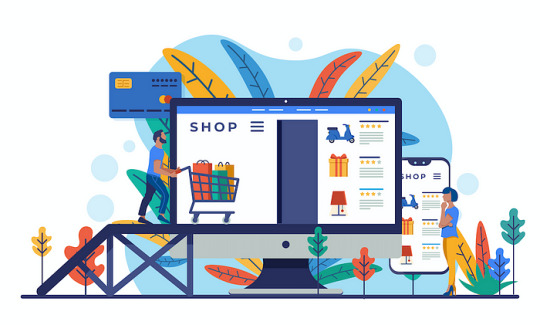
Benefits of Embracing the Multi-Vendor Marketplace Model
The multi-vendor marketplace model offers a multitude of benefits to sellers, marketplace owners, and consumers alike:
Sellers can rapidly expand their customer base on a global scale.
Vendors save on the costs and efforts associated with developing standalone applications, simply by signing up and listing their products.
Real-time inventory tracking and order management capabilities ensure timely order fulfillment and inventory control.
Marketplace owners can amass a broad clientele thanks to the extensive product range offered on their platform.
Owners can focus on enhancing vendor visibility, unburdened by the day-to-day operations of individual vendor shops.
The multi-vendor marketplace model provides diverse revenue streams, offering owners the potential for substantial earnings from a single platform.
Leveraging Laravel Ecommerce for Success
For those seeking a reliable software solution to build a promising multi-vendor marketplace, Laravel ecommerce emerges as an excellent choice. This comprehensive package boasts an array of features, including support for multiple payment gateways, advanced search functionality, robust store management tools, responsive customer support, multilingual options, and much more.
In conclusion, there has never been a better time for entrepreneurs to invest in the lucrative world of multi-vendor marketplaces. These platforms offer a gateway to multiple revenue channels and the potential for substantial profits in the dynamic eCommerce landscape.
#ecommerce#ecommerce clone scripts#laravel ecommerce store#laravel ecommerce system#laravel multivendor ecommerce#multi vendor laravel ecommerce#laravel ecommerce software#laravel ecommerce#laravel rental system#Ecommerce software#ecommerce marketplace software
0 notes
Text
To boost the profit of your restaurant, going online is a must.

During the pandemic, restaurants across the world were severely affected due to the confinement of the people. At that time of crisis, several restaurant businesses ceased to exist however, the smarter ones took advantage of the advancing technology. Technology not only kept them afloat but also delivered increased sales and profit.
Though the number of visitors has increased to the food outlet the number of online customers has only increased. This indicates the increased demand for ordering food online and getting it delivered to their doorsteps.
The reason behind the success of online ordering and delivery of food is the food delivery software that delivers to restaurant owners whatever they need to make their business thrive.
Convenience: The restaurants could easily upload their digital menu with attractive images along with the product specifications and prices with discounts to beautify their online front. Similarly, customers through a few clicks or touches of their smartphones could place an order for their favourite dish.
Superfast delivery: Food delivery solutions have drastically reduced the time taken to deliver the items to the customers’ location. Quick commerce is the direct result of technological advancements, including end-to-end automation. Now customers are able to receive fresh and hot food in 10 to 15 minutes.
Increased customer base: By on boarding multi vendor marketplace software, the restaurants can find new customers that will skyrocket their sales and profit. The online food marketplace increases the reach of the restaurants or in other words, assists in the marketing.
Create attractive offers: With the help of food delivery software, restaurant owners can create offers and discounts that will force more customers to place orders and increase their profits.
#quick commerce#ecommerce marketplace#food delivery software#multi vendor ecommerce#food delivery solution#food ordering software
0 notes
Text
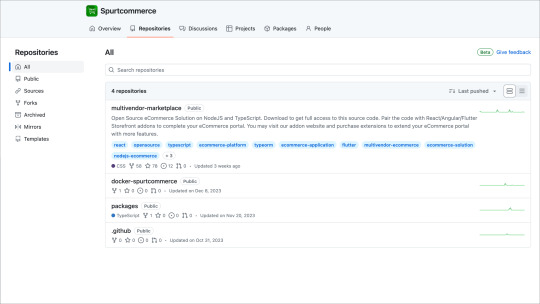
Dive into Spurtcommerce Multi-Vendor Repositories on #github
Join the revolution of Online Marketplace Development in Latest Technology.
🔹 Multi-Vendor Capabilities: Develop an Online Marketplace with Multi-Vendor Capabilities.
🔹 Seamless Data Migration: Smoothly migrate your existing eCommerce Data into Spurtcommerce.
🔹 Scalable Architecture: Grow your marketplace without limits, adapting to your needs.
🔹 Customization Options: Tailor your marketplace to your brand's unique identity and vision.
0 notes
Text
What It Takes to Create a Multi-Vendor Marketplace Like eBay
The article was initially published in WebMeridian blog.
The examples of giant multi-vendor marketplaces like eBay inspire entrepreneurs worldwide to try to repeat their accomplishments. Why did this business model become so popular?
A tremendous product range, low entry barriers, economies of scale, a variety of opportunities for revenue generation, easy scalability, and global reach are just some of the enticing benefits an online multi vendor marketplace platform can offer.
eBay, a trailblazer in online auctions, today boasts impressive statistics:
132 million shoppers worldwide;
$2.54 billion in revenue in the second quarter of 2023.
No wonder it has become a benchmark for many industry players.
Today, armed with the valuable experience of pathfinders, businesses can attain stellar results with significantly lower effort. Building and running an eCommerce website like eBay still provides plentiful opportunities to grow.
Moreover, with the help of modern technology, the venture becomes more efficient and straightforward.
Let’s talk about eBay’s journey to prosperity, the benefits and opportunities of a bidding website like eBay, and the ways to craft a winning marketplace that would bring fruits for years to come.
What is a Bidding Website Like eBay?
A bidding website is an online resource where visitors can participate in auctions to obtain items. Vendors can list their products there, and potential buyers place bids on respective items. In ascending auctions, the highest bidder wins the piece and obtains it by paying the winning bid amount. In the descending auction, the bids are going in the opposite direction.
Thanks to its immense success and popularity, eBay’s model has set standards for other online marketplaces. Here’s how it works:
Listing items. Vendors outline the items they wish to sell, accompanied with their images, initial price, and auction duration.
Bidding. Potential buyers browse the listings and place bids on the selected pieces.
Winning bid. When the auction finishes, the highest bidder wins the item. The winner receives the respective note with instructions on completing the purchase.
Payment and fulfillment. The auction winner must pay the final bid amount to the seller. The shipping occurs after the payment is received.
Feedbacks. After the transaction is completed, both shoppers and vendors may leave feedback and ratings for each other based on their experience.
An auction website like eBay offers a dynamic and competitive buying experience, as users engage in real-time bidding to obtain a desired piece.
The product categories introduced on such platforms expand beyond consumer goods and include collectables, electronics, fashion, vehicles, and many more. The auction format is exciting as it creates a sense of urgency among bidders, making it a unique way to shop online.
eBay Path to Success
To gain a holistic view of the eBay case, we’ll explore how this business was built.
eBay Journey
eBay’s story is a testament to innovation, adaptability, and the power of online marketplaces. Conceived in 1995, eBay began as a simple auction website where visitors could trade collectables. The platform’s success was rooted in its user-centric approach and its ability to create a dynamic web-based marketplace.
eBay quickly expanded its offerings beyond collectables to include a vast assortment of products, opening the service to a global audience. Its feedback and rating system has built trust among clients, establishing a foundation of reliability.
One of eBay’s key innovations was the concept of consumer-to-consumer (C2C) ecommerce, which enabled individuals to easily turn their possessions into cash by selling to a vast online audience. This democratization of commerce attracted millions of consumers seeking to gain prominence, find unique items, or start small businesses.
Recognizing the potential of the evolving internet landscape, eBay acquired PayPal, thereby expediting the payment process, enhancing the user experience, and elevating the platform’s credibility.
An iconic name in online trading, eBay inspires entrepreneurs worldwide and carries a plethora of precious insights for followers.
eBay Business Model
eBay grants a unique experience to its users.
Shoppers can enjoy two types of pricing models: a fixed price and an auction listing. The pricing model can be adapted depending on the supply/demand balance. Ultimately, buyers can bid on their favorite pieces, and sellers increase their income.
eBay grants significant opportunities to grow. To acquire more vendors, the resource provides flexible fees and user-friendly services. Vendors can establish their account and adjust their marketplace page to their demands.
Sellers can settle their rules. eBay enables its vendors to master their delivery fees and return rules.
eBay Revenue Sources
The platform leverages several monetization strategies:
Vendor fees. Sellers pay a percentage of each transaction.
Listing fee. If sellers publish over 50 pieces per month, each extra item must be paid.
Insertion fees. If the item appears in several categories, a vendor pays for each category.
PayPal fees. The payment is composed of a percentage of transactions and a fixed fee.
Advertising. Sites like eBay are tempting for advertisers, and they earn on paid placements.
Freemium packages. Basic services are available for free, while premium services must be paid.
Why Build a Multi-Vendor Marketplace Like eBay? Core Benefits
What can you attain if you choose to create a website like eBay? The resource benefits numerous stakeholders, including platform owners, shoppers, and vendors.
Let’s explore the specific advantages it can deliver.
1. Worldwide reach
eBay is an international resource, granting vendors access to a massive audience. This opportunity is particularly enticing if you envisage expanding your consumer base beyond your local market.
2. Increased product discovery
You can find virtually anything on eBay. With a massive product supply on the marketplace, buyers have a higher chance of discovering unique and niche pieces that might not be available on conventional retail stores.
This leads to increased sales on eBay like websites and makes them a one-stop destination for shoppers.
3. Price competition
Multiple sellers offering similar products spur healthy competition, leading to competitive pricing. Shoppers can compare prices, shipping options, seller ratings, and other conditions to make informed buying decisions.
4. Scalability and minimized inventory expenses
Sellers can leverage the marketplace’s platform and consumer audience, reducing the need for their independent ecommerce infrastructure. This is an excellent chance for new and small businesses to scale without significant upfront investment.
5. Lower entry barrier for sellers
Starting your own ecommerce store requires considerable resources. Unlike joining a multi-vendor marketplace, however, where merchants can quickly and almost effortlessly enter the market.
Furthermore, they don’t need to arrange their own website or invest in generating initial traffic.
6. Community and support
A website like eBay has an active user community, forums, and consumer support to assist users with their queries and concerns.
Furthermore, marketplaces address all technical aspects like website maintenance and security. This relieves sellers from technical hassle and enables them to focus on strategic goals.
Main Features for an eBay Alternative
When creating a multi-vendor marketplace platform, you should implement a neat suite of features to facilitate smooth interactions between parties.
Let’s discuss several primary characteristics typically encountered in such marketplaces:
1. User profiles
Separate profiles for shoppers and vendors.
Seller profiles showcase their pieces, ratings, reviews, and other associated data.
Buyer profiles track their order history, wish lists, and saved searches.
2. Listings and catalog
Vendors can compose and control their product listings.
Items are categorized and tagged for effortless discovery.
Product descriptions, images, prices, and delivery information are included.
3. An auction feature
When building an online marketplace like eBay, complement the conventional marketplace functionality with the ability for users to place bids.
4. Shopping cart
Shoppers can add pieces to their shopping carts.
The checkout is seamless and contains various payment methods.
Secure payment gateways for transactions.
5. Reviews
Shoppers can rate and leave reviews for products and sellers.
Reviews contribute to vendor reputation and product quality assessment.
6. Search options
Potent search functionality for users to navigate through thousands of products.
Filters based on categories, prices, ratings, and more.
7. Order management
Vendors maintain complete control over their orders, including order processing, shipping, and tracking.
Shoppers can monitor the status of their orders and interact with sellers.
8. Seller dashboard
Through a dashboard, vendors can administer their inventory, sales, orders, and analytics.
The opportunity to explore performance insights, sales trends, and customer behavior data.
9. Platform’s fees
Select your monetization strategy and implement it clearly and transparently. The marketplace can charge sellers a commission or listing fees for using its services.
Offer automatic calculation of fees based on sales.
10. Messaging and notifications
Inherent messaging system for communication between buyers and sellers.
Email or app notifications for order updates, inquiries, and promotions.
11. Secure transactions
Protect buyers’ and sellers’ financial information with secure payment processing.
Include services to hold funds until the transaction is completed.
12. Shipping
Integration with carriers for real-time shipping quotes and tracking.
Options for vendors to select shipping methods and costs.
13. Multi-currency and multi-language support
Support for different currencies and languages to cater to a global audience.
14. Mobile responsiveness
Establish a mobile-friendly interface or craft a dedicated mobile app for visitors on the go.
15. Analytics and reports
Data insights for vendors and the platform owner, including sales reports, customer behavior, and popular items.
16. Marketing
Tools for sellers to run promotions, discounts, and special offers.
Banner placements, featured products, and sponsored listings.
17. Social sharing
Integration with social media platforms for consumers to share information.
18. Trust and security measures
User authentication, SSL certificates, and security protocols to protect consumer information.
Fraud prevention and user verification processes.
The choice of your particular feature set and its implementation will be dictated by your marketplace’s segment, target audience, business model, and other factors. When building your multi-vendor marketplace website, you should meticulously plan your undertaking and regard the demands and aspirations of the service’s potential users.
Steps How to Build a Website Like eBay
The industry pioneers, including eBay, have already come this way. It eases your path since you can follow their traces in certain aspects. However, today, you’ll have to cut through fierce competition when creating your multi vendor marketplace platform.
We’ve collected several vital preparatory steps you can take to lay a solid foundation for future prosperity.
1. Research the market
What does this phase entail?
Determine your target market and segment
Competing with everyone may become overwhelming. Narrow down your focus by identifying your clientele, their needs and anticipations, and try to reveal unsatisfied demands. Spot the gaps in existing offerings to discover the space for your service’s positioning.
Analyze competitors
Think of multi-vendor marketplaces like eBay in terms of their strengths and weaknesses. What can you borrow from them? Is there something they are not doing? Is there something you can do better?
Define your unique value proposition
The fundamental goal of this phase is to shape your positioning that would be grounded on the unique value proposition. This is the cornerstone of your marketing strategy that would help you distinguish yourself from the competition.
2. Develop a monetization model
When crafting a multi vendor marketplace website, you should determine how your venture will operate in terms of financial streams. We have already described the eBay monetization strategy.
You are free to select your own approach based on the several models:
Commission-based strategy. Vendors pay commission for every transaction.
Subscription-based strategy. You establish a membership fee for using your service.
Listing fee. Vendors pay for listing their pieces on your resource.
Freemium strategy. You grant your users free access to some features, while advanced ones (i.e. expedited shipping) come at a cost.
To create a multi vendor ecommerce marketplace website, you can implement each approach or their combination in any convenient way. Just carefully analyze each model’s implications for your business and ensure it will operate successfully.
3. Who’s first: sellers or buyers?
When you build a multi vendor marketplace, a reasonable question would be, whom should you target first: your potential vendors or potential shoppers? There is no universal recipe.
However, you can explore several efficient approaches that would guide you to the appropriate solution.
Start with the hardest side. Offer a certain value for one category. The accumulated supply will then trigger demand and vice versa.
Identify your market segment. If you have properly fulfilled Step 1, you’ll have this task already done. By starting successfully with a small group of clients, you’ll be able to scale as your business grows.
Focus on your unique value proposition. Promote your unique value proposition by offering relevant discounts and perks.
Create a community. eBay is praised for its extensive audience of fans. Arrange live action and buzz around your multi-vendor marketplace.
Leverage promo tricks. Invite sellers to become your agents by attracting buyers for a certain incentive. Establish restricted access to particular features, products, or categories to shape a feeling of exclusivity. Partner with a celebrity as your brand endorser.
4. Select your eCommerce platform
Multi vendor marketplace development requires a reliable eCommerce platform that would empower you to set all the desired functionality and realize the business strategy.
You are already familiar with the essential features auction websites should contain. The chosen software solution should match your business needs and ensure that the features and the entire platform will operate smoothly.
The galloping software market entices users with abundant offers, making the selection process a challenge for entrepreneurs. To ease your choice, we suggest a range of factors to base your decision on:
Scalability. Favor platforms that offer scalability features such as load balancing, caching, and efficient database management.
Multi-vendor functionality. The platform should have inherent multi-vendor capabilities or be easily customizable to support multiple sellers.
Flexibility. Prioritize platforms with a strong developer ecosystem or open APIs that enable deeper customization.
Security. Prefer platforms with strong security features and compliance with industry standards.
Mobile responsiveness. Ensure the platform provides a seamless experience on various devices and screen sizes.
Marketing tools. Consider inherent SEO tools and marketing features such as discounts, coupons, and integrations with social media and email marketing.
According to our experience, Magento satisfies all the criteria mentioned above and enables excellent store performance.
How to Create an Online Marketplace Like eBay with Magento?
Magento is extolled for its flexibility, tremendous range of features, marketing tools, and massive storage capacity. With a market share of 1.72%, the platform falls within the top seven ecommerce platforms worldwide.
Furthermore, Magento powers over 250,000 of active websites globally and helps merchants achieve about three times faster growth than websites using the other platforms.
So, how to make an auction website like eBay with Magento?
Building an alternative to eBay using Magento is beneficial since the solution carries extensive functionality for a multi vendor marketplace.
Vendor and customer management;
Administering catalog and orders;
Customer care;
Promo and marketing tools;
Multi-vendor module dashboard and reports;
Payment gateway APIs;
Integration with third-party tools.
If you plan to build an auction website, do not forget to select an appropriate auction Magento extension.
Ultimately, you can cooperate with a professional IT partner to ensure that your store is set up properly and functions to its maximum potential.
Conclusion: Create an eBay-Like Website
Building an ecommerce multi vendor marketplace is a beneficial yet challenging venture. The experience of industry giants, such as eBay, urges many entrepreneurs to try to repeat or surpass their achievements. Indeed, following the beaten path seems easier than becoming a trailblazer, while the stories of your predecessors’ triumph sound inspiring.
However, the contemporary environment poses plentiful challenges to daring merchants. To assist you in their mitigation, we have compiled this list of the primary steps toward a successful multi vendor marketplace solution and the fundamental features it should comprise.
Some of your core strengths here include the opportunity to learn from others’ experience, access to helpful technologies, and the availability of trustworthy partners who can simplify the whole development process for you.
With our 7+ years of experience with Magento, technical prowess, and solid domain expertise, we can handle your project from the ground up.
Entrust creating your multi vendor ecommerce marketplace to us and make your path smooth and results — impressive! Just leave a request!
#marketplace#multi vendor marketplace#ecommerce#ecommerce website#ecommerce web development#ecommerce website development
1 note
·
View note
Text
Building a Dynamic E-commerce Website with Django and React.js

View On WordPress
#Django ecommerce source code#Django React Ecommerce Source code#Django React project#Django Source Code Blog#Dynamic E-commerce Website with Django and React.js#E-commerce Website with Django and React.js#multi-vendor e-commerce in django
0 notes
Text
Online Multi-Vendor Platform for B2B or B2C Marketplaces
FlightsLogic is the best B2B eCommerce multi-vendor marketplace platform with a wide list of all essential eCommerce features, expert technical support, ability to customize, highly scalable, and more. The platform offers a complete package to kick-start your B2B marketplace and streamline eCommerce operations.
Our fully customizable multi-vendor eCommerce solution allows for selling multiple products through a single storefront and customers can add products from different vendors to their single shopping cart. The site admin can set up shipping regulations, modify products in the marketplace, and add new sellers or vendors.
FlightsLogic is a self-hosted multi-vendor software for marketplaces suitable for both startups as well as enterprises. The on-premise platform is fully scalable, easy to customize, and follows agile methodologies to help you gain a competitive edge. & Amazon Business, Alibaba, Rakuten, IndiaMart, and Global Sources are the top five B2B eCommerce marketplaces globally.

Our multi-vendor eCommerce marketplace development services cater to eCommerce businesses of all sizes to set up and manage marketplaces quickly, affordably, and efficiently, along with a focus on providing full control over your eCommerce store’s functionality.
FlightsLogic powered B2B Marketplace Website Software Solution comes in handy by providing you a platform to aggregate vendors, and buyers at the same place and manage the selling process effectively.
Multi-vendor marketplace software comes with powerful features including an easy-to-use interface, simple payment methods, social media integrations, rewards and discounts, ratings and reviews, and more. You can start small by taking a conservative approach and opting for an MVP. It is a minimalistic version of your B2B eCommerce marketplace. An MVP enables you to gauge the response of your target audience and pinpoint the flaws that could be detrimental at a later stage.
At FlightsLogic, we develop data-driven online marketplace solutions to help our clients establish a strong market presence. We offer the best set of features at competitive pricing. Our solutions deliver the perfect price-to-functionality ratio and this enables our clients to test their online B2B marketplace idea in the real world at an affordable price.
0 notes
Text
#shopify multivendor#shopify experts#hire shopify experts#shopify development company#ecommerce development company#shopify marketplace app#shopify multi vendor marketplace#shopify experts marketplace#shopify expert marketplace#multi vendor marketplace shopify#multi vendor marketplace app
0 notes